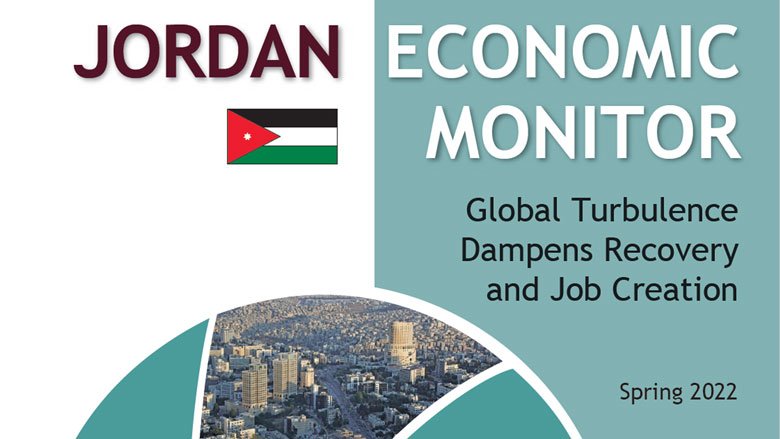Jordan’s economy achieved a relatively strong rebound, registering 2.2 percent growth in 2021. The nascent recovery was led by a broad-based expansion of the services and industrial sectors, while the rebound in the travel and tourism also exceeded expectations. This robust economic recovery was supported by accommodative but prudent monetary and fiscal policy along with a recovery in domestic demand and the gradual reopening of the economy.
However, the recovery of some subsectors, particularly contact-intensive services continues to lag behind pre-pandemic level, leading to weak recovery in jobs, especially among the Jordanian youth. Moreover, the underlying improvement in domestic demand amid an unprecedented increase in the global commodity prices has kept the current account deficit elevated for another year. Nonetheless, Jordan ended 2021 on a strong footing as Central Bank’s gross foreign reserves remained at a comfortable level, on the back of strong multilateral and bilateral support. Meanwhile, the Central Government resumed its fiscal consolidation path, aided by strong growth in both tax and non-tax revenues.
The Jordanian economy is expected to sustain recent momentum during 2022, aided by a full opening of the economy and a return in tourism and travel which is anticipated to boost Jordan’s services sector. However, persistent global headwinds, including rising international commodity prices, global supply chain bottlenecks, negative spillovers from Russian invasion of Ukraine, and Fed tapering, pose major downside risks to Jordan’s economic outlook. Thus, a private sector driven growth and investment reform agenda needs to be put in place immediately which can help Jordan manage turbulence and uncertainty better.
- Jordan Economic Monitor, Spring 2022: Global Turbulence Dampens Recovery and Job Creation (Full Report in a PDF Format)
